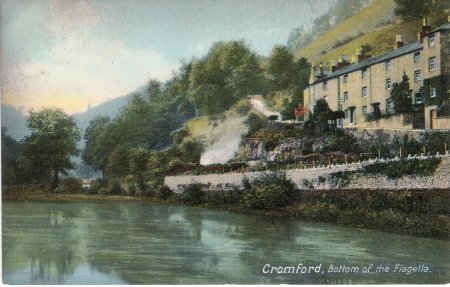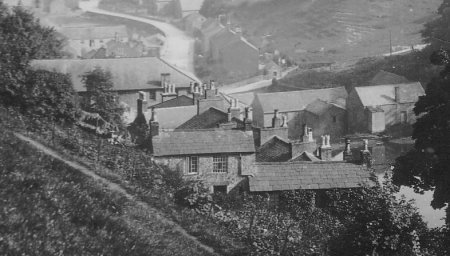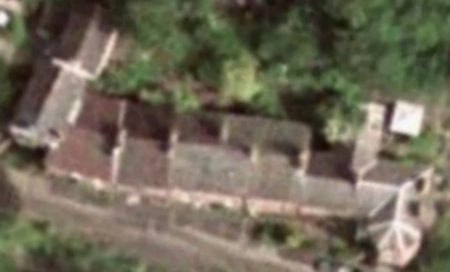Chapel Hill climbs steeply past 6 stone terrace houses (26-24-22-20-18-16).

Taken Dec 1941. From Chapel Hill looking down Water Lane.

Dates:
Photo taken:
Size:Postcard
Source: Click on photo for enlargement (on CD only)
Have any more information about this photo?
Please e-mail the author on:
Click on photo for enlargement (on CD only)
Have any more information about this photo?
Please e-mail the author on:

 Click on photo for enlargement (on CD only)
Have any more information about this photo?
Please e-mail the author on:
Click on photo for enlargement (on CD only)
Have any more information about this photo?
Please e-mail the author on:

Cromford, bottom of the Fiagella
A road called Via Gellia enters Cromford at Water Lane by
Cromford Pond, which is in this photo (but see letter below).
It is thought the
photographer wrote the name down wrongly when he quizzed a local
as to where he was. The Pond was built by Sir Richard Arkwright
to help power his Cotton Mill, and Via Gellia was named after the
Gell family who built it to supply a mine. It is also thought that
the woollen material called Viyella was named after Via Gellia.
..the imposing stone terrace at the top [of Chapel Hill]
is clearly much older. Number 16, Via Gellia House with its
large bays, was built by Nathaniel Wheatcroft about 1780 and
originally included Number 18. The Wheatcroft family operated
boats on the canal wharf and in 1830 advertised fast passenger
boats; the house was occupied by the family until well into the
nineteenth century, and the name can still be seen on the wharf.
Number 22 with its fine porch was built about 1780 although
interior evidence of roof lines and windows suggests it may
incorporate an older building. Number 26 still has original
cast iron window frames in the upper storey, with small inner
lights. At the rear, the houses have doors in the first storey
which may well have been used for unloading outwork from the
mills.....
"The Cromford Guide" by Bayles & Ede, page 41
The stone terrace on Chapel Hill, built about 1780.

..the imposing stone terrace at the top [of Chapel Hill]
is clearly much older. Number 16, Via Gellia House with its
large bays, was built by Nathaniel Wheatcroft about 1780 and
originally included Number 18. The Wheatcroft family operated
boats on the canal wharf and in 1830 advertised fast passenger
boats; the house was occupied by the family until well into the
nineteenth century, and the name can still be seen on the wharf.
Number 22 with its fine porch was built about 1780 although
interior evidence of roof lines and windows suggests it may
incorporate an older building. Number 26 still has original
cast iron window frames in the upper storey, with small inner
lights. At the rear, the houses have doors in the first storey
which may well have been used for unloading outwork from the
mills.....
|
The stone terrace on Chapel Hill, built about 1780.
